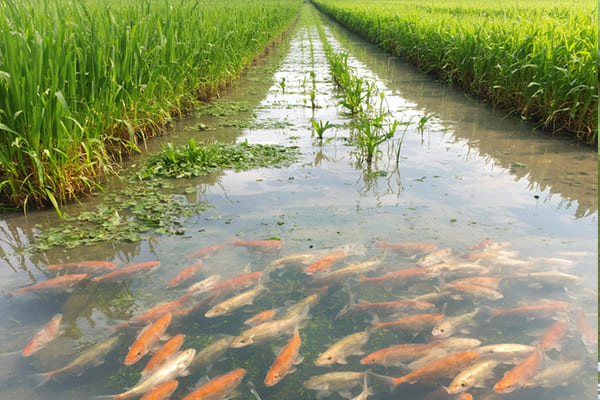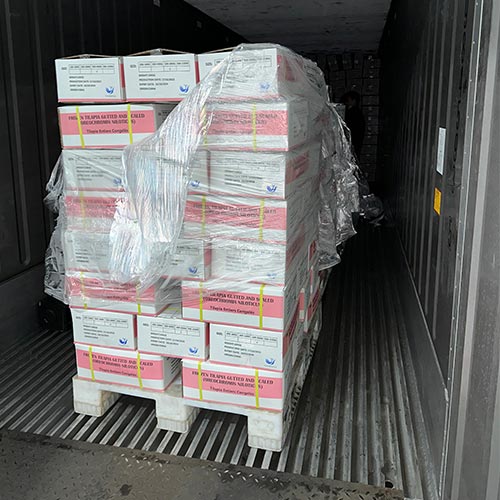Amidst growing concerns about sustainability in the seafood industry, tilapia farming has emerged as a viable solution, particularly in China.
The nation's progressive approach to aquaculture has catapulted it to the forefront of the tilapia farming revolution, setting a benchmark for environmentally conscious practices.
As consumer demand for sustainable seafood skyrockets, Chinese tilapia farms embrace innovative techniques to meet this need without compromising quality or quantity.
China's strategic focus on tilapia farming caters to the escalating demand for seafood.
It underscores its commitment to responsible environmental stewardship. By harnessing cutting-edge technology and sustainable practices, Chinese tilapia farms set a new standard for the industry worldwide.
This article delves into the ascendancy of tilapia farming in China, exploring how this sustainable seafood solution is reshaping the global aquaculture landscape.
The Growth of Tilapia Farming in China
The tilapia farming industry in China has experienced remarkable growth over the past few decades, establishing itself as a significant player in the global aquaculture market. tilapia was introduced to China in the 1970s.
Still, it wasn't until the 1990s that large-scale farming began to take shape. Today, China is the world's largest producer of tilapia, contributing over 60% of the global supply.
This impressive growth can be attributed to several factors, including favorable climatic conditions, extensive water resources, and a growing demand for nutritious seafood.
Chinese farmers have embraced tilapia farming as a lucrative business opportunity and a response to the escalating need for sustainable protein sources.
With the population steadily increasing, the pressure on conventional fisheries has escalated, leading to overfishing and environmental degradation. Tilapia, a hardy species that thrives in diverse environments, has become the go-to fish for aquaculture.
Its ability to be farmed in freshwater and brackish water has allowed farmers to utilize various water bodies, maximizing production efficiency.
Moreover, the Chinese government has been pivotal in promoting tilapia farming. Initiatives aimed at modernizing aquaculture practices and enhancing production efficiency have been implemented.
Investments in research and development have led to improved breeding techniques and disease management strategies, further boosting the productivity of tilapia farms.
As a result, tilapia farming has evolved into a well-structured industry that meets domestic demand and caters to international markets, making it a significant contributor to China's economy.
Benefits of Tilapia Farming
Tilapia farming offers numerous benefits that extend beyond mere economic gains.
One of the primary advantages is its efficiency in converting feed into protein. Tilapia has a high feed conversion ratio, meaning they require less feed to grow than other fish species.
This characteristic makes tilapia farming a cost-effective and sustainable option for protein production. Farmers can produce significant quantities of fish while minimizing resource input, which is particularly important in an era where food security is a pressing concern.
Furthermore, tilapia is recognized for its health benefits, making it an attractive choice for consumers. Rich in protein, low in fat, and high in essential nutrients, tilapia is a nutritious option that aligns with contemporary dietary preferences.
As the global population becomes more health-conscious, the demand for healthy, sustainable seafood options continues to rise. Tilapia farming, therefore, not only addresses the need for sustainable protein but also provides a nutritious food source that caters to health-oriented consumers.
Sustainability Practices in Tilapia Farming
Sustainability is at the forefront of tilapia farming practices in China, with farmers increasingly adopting methods that minimize environmental impact while maximizing productivity.
One of the key sustainability practices is the use of integrated aquaculture systems.
These systems combine fish farming with other agricultural practices, such as rice cultivation. The nutrient-rich water from tilapia ponds irrigates rice fields, creating a symbiotic relationship that enhances productivity for crops and fish.
In addition to integrated systems, many tilapia farms are implementing recirculating aquaculture systems (RAS), significantly reducing water usage and waste output.
RAS technology allows farmers to reuse water by filtering and treating it within a closed-loop system, minimizing the need for fresh water and reducing the discharge of pollutants into the environment.
This innovative approach conserves water resources and enhances biosecurity by reducing disease transmission.
Furthermore, responsible feed sourcing is a critical aspect of sustainable tilapia farming. Chinese farmers are increasingly turning to plant-based feed alternatives and agricultural by-products, which lower the reliance on fishmeal sourced from wild fisheries. This shift not only alleviates pressure on overfished marine ecosystems but also aligns with the principles of sustainable aquaculture.
By prioritizing environmentally friendly practices, Chinese tilapia farms set a benchmark for sustainable seafood production that can be emulated worldwide.
Challenges Faced by Tilapia Farmers
Despite the numerous advantages associated with tilapia farming, farmers in China face several challenges that can impede growth and sustainability.
One of the most pressing issues is disease management. As tilapia farming has expanded, so has the prevalence of diseases that can affect fish health and productivity.
Farmers must remain vigilant and employ effective biosecurity measures to prevent outbreaks that could devastate stocks. This challenge necessitates ongoing research and investment in veterinary care and disease prevention strategies.
Another significant hurdle is the competition from imported tilapia. While China is the leading producer, it also faces stiff competition from countries such as Vietnam and Egypt, which export tilapia at competitive prices.
The influx of cheaper imports can undermine local producers and create challenges in maintaining profitability. To combat this, Chinese farmers are focusing on enhancing product quality and developing unique marketing strategies highlighting their tilapia's sustainability and health benefits.
Environmental concerns surrounding water quality and pollution also pose risks to tilapia farming. With increased agricultural runoff and industrial pollution, maintaining clean water sources for aquaculture is becoming increasingly challenging. Farmers must implement effective management practices to mitigate these risks and ensure the health of their fish stocks.
Sustainable farming practices, such as regularly monitoring water quality and using organic inputs, are essential to addressing these environmental challenges.
Tilapia Farming Techniques and Innovations
The evolution of tilapia farming in China has been marked by adopting innovative techniques that enhance productivity and sustainability. One of the most significant advancements is selective breeding.
Farmers can significantly improve production efficiency and reduce the risk of disease outbreaks by focusing on breeding fast-growing and disease-resistant strains of tilapia.
This selective breeding program has resulted in tilapia varieties that grow more rapidly and are better suited to local environmental conditions.
Incorporating technology into tilapia farming is another innovative approach that has gained traction.
Many farms now utilize innovative farming technologies, such as Internet of Things (IoT) devices, to monitor real-time water quality parameters, feed levels, and fish health.
This data-driven approach allows farmers to make informed decisions about management practices, optimizing feeding schedules and enhancing overall farm productivity.
By leveraging technology, tilapia farmers can respond quickly to potential issues, ensuring the health and welfare of their fish.
Moreover, implementing aquaponics systems is revolutionizing tilapia farming by integrating fish and plant production.
In these systems, fish waste provides nutrients for plants, while plants help filter and purify the water for the fish. This closed-loop system maximizes resource efficiency and reduces waste, making it an attractive option for environmentally conscious farmers.
As the demand for sustainable practices continues to grow, aquaponics represents a promising avenue for the future of tilapia farming.
Tilapia Nutrition and Health Benefits
Tilapia has gained recognition for its sustainability and nutritional profile, making it a popular choice among health-conscious consumers.
This fish is an excellent source of high-quality protein, providing all the essential amino acids necessary for human health.
With approximately 26 grams of protein per 100 grams of cooked tilapia, it is a valuable dietary option for individuals seeking to increase their protein intake without consuming excessive calories.
In addition to protein, tilapia is low in saturated fat and offers a healthy alternative to red meat and processed foods. This characteristic aligns with contemporary dietary guidelines emphasizing the importance of reducing saturated fat consumption to lower the risk of heart disease.
Furthermore, tilapia is rich in essential nutrients, including B vitamins, selenium, and phosphorus, which play vital roles in energy metabolism, immune function, and bone health.
Moreover, tilapia is a versatile ingredient that is easily incorporated into various culinary dishes, making it an appealing choice for consumers.
Its mild flavor and flaky texture allow it to be prepared in numerous ways, from grilling and baking to steaming and frying. As the popularity of healthy eating continues to rise, tilapia's nutritional benefits and culinary versatility position it as a staple in many households, further boosting its demand in the market.
Market Demand for Tilapia
The demand for tilapia has surged in recent years, driven by growing consumer awareness of health and sustainability issues.
As more individuals seek seafood options that align with their dietary preferences and environmental values, tilapia has become a favored choice.
This trend is particularly pronounced in urban areas, where consumers increasingly prioritize fresh, locally sourced, and sustainably produced food.
China's Tilapia Fillet exports have also grown significantly, with the fish gaining popularity in international markets.
Countries in North America, Europe, and Southeast Asia have become major importers of Chinese tilapia, further fueling the industry's expansion.
The ability of Chinese farmers to produce tilapia at scale while adhering to sustainable practices has allowed them to meet the rising global demand for this versatile fish.
Marketing strategies highlighting tilapia's sustainability and health benefits are crucial in capturing consumer interest.
Transparency and traceability have become essential components of consumer decision-making as the seafood industry evolves.
By emphasizing their commitment to responsible farming practices and providing information about the origin of their products, Chinese tilapia farmers can strengthen their position in the market and foster consumer trust.
The Future of Tilapia Farming
Looking ahead, the future of tilapia farming in China appears promising, driven by continued innovation and a commitment to sustainability.
Farmers will likely adapt their practices as consumer preferences evolve to meet the growing demand for responsibly sourced seafood.
This includes investing in new technologies, such as artificial intelligence and machine learning, to enhance farm management and optimize production processes.
Additionally, the increasing focus on environmental sustainability will drive further advancements in farming techniques.
Integrating renewable energy sources, such as solar and wind power, into aquaculture operations can reduce reliance on fossil fuels and lower the carbon footprint of tilapia farming.
As environmental regulations become more stringent, farms prioritizing eco-friendly practices will be better positioned to thrive in the future.
Furthermore, collaboration among stakeholders, including farmers, researchers, and policymakers, will be crucial in shaping the future of tilapia farming.
By working together to address challenges such as disease management, water quality, and market access, the industry can evolve sustainably. Emphasizing research and education will empower farmers to adopt best practices, ensuring that tilapia farming remains a viable and responsible source of seafood for generations to come.
Conclusion: Tilapia Farming as a Sustainable Seafood Solution
In conclusion, tilapia farming in China has emerged as a sustainable seafood solution that addresses the growing demand for protein while promoting environmental stewardship.
The industry's impressive growth, driven by innovative practices and a commitment to sustainability, has positioned China as a leader in global aquaculture. With numerous benefits, including efficient production methods, health advantages, and eco-friendly practices, tilapia is well-suited to meet the needs of today's consumers.
As challenges arise, such as disease management and competition from imports, the resilience and adaptability of Chinese tilapia farmers will be essential in navigating the future.
By leveraging technology, implementing sustainable practices, and collaborating with stakeholders, the tilapia farming sector can continue to thrive while contributing to food security and environmental conservation.
Ultimately, the rise of tilapia farming in China serves as a model for sustainable seafood production that can inspire other countries to adopt similar practices. With a focus on innovation, sustainability, and consumer health, tilapia farming is a promising solution to the challenges facing the seafood industry today and in the future.












